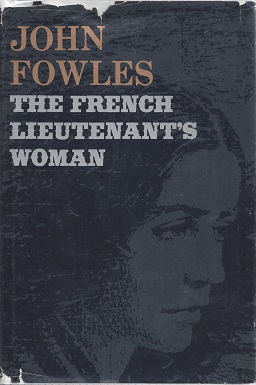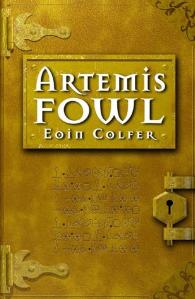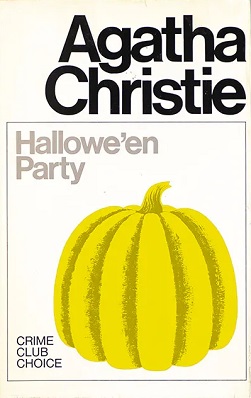
Gary Cooper was an American actor known for his strong, quiet screen persona and understated acting style. He won the Academy Award for Best Actor twice and had a further three nominations, as well as an Academy Honorary Award in 1961 for his career achievements. He was one of the top-10 film personalities for 23 consecutive years and one of the top money-making stars for 18 years. The American Film Institute (AFI) ranked Cooper at number 11 on its list of the 25 greatest male stars of classic Hollywood cinema.

John Robert Fowles was an English novelist of international renown, critically positioned between modernism and postmodernism. His work was influenced by Jean-Paul Sartre and Albert Camus, among others.

Victoria Louise Samantha Marie Elizabeth Therese Eggar is a retired British-American actress. After beginning her career in Shakespearean theatre she rose to fame for her performance in William Wyler's thriller The Collector (1965), which earned her a Golden Globe Award, a Cannes Film Festival Award and an Academy Award nomination for Best Actress.

The French Lieutenant's Woman is a 1969 postmodern historical fiction novel by John Fowles. The plot explores the fraught relationship of gentleman and amateur naturalist Charles Smithson and Sarah Woodruff, the former governess and independent woman with whom he falls in love. The novel builds on Fowles' authority in Victorian literature, both following and critiquing many of the conventions of period novels.

Dr. Artemis Fowl II is the eponymous character of the Artemis Fowl series by Eoin Colfer. Colfer has said that he based Artemis on his younger brother Donal, who as a child was "a mischievous mastermind who could get out of any trouble he got into." A childhood picture of his brother in his first communion suit caused Colfer to think of how much Colfer's brother resembled "a little James Bond villain" and "how funny...a twelve-year-old James Bond villain" would be, inspiring Colfer's creation of Artemis.

The Fowl Adventures is a series of eleven fantasy novels written by Irish author Eoin Colfer revolving around various members of the Fowl family. The first cycle, Artemis Fowl, follows elf Lower Elements Police Reconnaissance (LEPRecon) officer Holly Short as she faces the forces of criminal mastermind Artemis Fowl II; later on in the cycle they become friends and Artemis Fowl II saves the world a few times. The second cycle, The Fowl Twins, received positive critical reception and generated huge sales. It has also originated graphic novel adaptations.

Hallowe'en Party is a work of detective fiction by English writer Agatha Christie, first published in the United Kingdom by the Collins Crime Club in November 1969 and in the United States by Dodd, Mead and Company later in the same year. The UK edition retailed for 25 shillings. In preparation for decimalisation on 15 February 1971, it was priced on the dustjacket at £1.25. The US edition retailed at $5.95. This book was dedicated to writer P. G. Wodehouse.

Captain Holly Short is a character in the Artemis Fowl novel series by Eoin Colfer.

The Magus (1965) is a postmodern novel by British author John Fowles, telling the story of Nicholas Urfe, a young British graduate who is teaching English on a small Greek island. Urfe becomes embroiled in the psychological illusions of a master trickster, which become increasingly dark and serious. Considered an example of metafiction, it was the first novel written by Fowles, but the second he published. In 1977 he published a revised edition.

Charles Chi-tat Ng is a convicted Hong Kong-born serial killer who committed numerous crimes in the United States. He is believed to have raped, tortured, and murdered between eleven and twenty-five victims with his accomplice Leonard Lake at Lake's cabin in Calaveras County, California, 60 miles (96 km) from Sacramento, between 1983 and 1985. After his arrest and imprisonment in Canada on robbery and weapons charges, followed by a lengthy dispute between Canada and the U.S., Ng was extradited to California, tried, and convicted of eleven murders. He is currently on death row at San Quentin State Prison.

A Maggot (1985) is a novel by British author John Fowles. It is Fowles' sixth major novel, following The Collector, The Magus, The French Lieutenant's Woman, Daniel Martin and Mantissa. Its title, as the author explains in the prologue, is taken from the archaic sense of the word that means "whim", "quirk", "obsession", or even a snatch of music. Another meaning of the word "maggot" becomes apparent later in the novel, used by a character to describe a white, oblong machine that appears to be a spacecraft. Though the author denied that A Maggot is a historical novel, it does take place during a precise historical timeframe, April 1736 to March 1737, in England. It might be variously classified as historical fiction, mystery, or science fiction. Because of the narrative style and various metafictional devices, most critics classify it as a postmodern novel.

Two Rode Together is a 1961 American Western film directed by John Ford and starring James Stewart, Richard Widmark, and Shirley Jones. The supporting cast includes Linda Cristal, Andy Devine, and John McIntire. The film was based upon the 1959 novel Comanche Captives by Will Cook.
The 1951 novel The Catcher in the Rye by J. D. Salinger has had a lasting influence as it remains both a bestseller and a frequently challenged book. Numerous works in popular culture have referenced the novel. Factors contributing to the novel's mystique and impact include its portrayal of protagonist Holden Caulfield; its tone of sincerity; its themes of familial neglect, tension between teens and society, and rebellion; its previous banned status; and Salinger's reclusiveness.
Philippa Ann Guard is a British actress.

Life As We Knew It is a young adult science fiction novel by American author Susan Beth Pfeffer, first published in 2006 by Harcourt Books. It is the first book in The Last Survivors series, followed by The Dead and the Gone. When an asteroid hits the Moon and brings it closer to Earth, life in Northeastern Pennsylvania will never be the same again for Miranda and her family. The lack of food and extreme cold provides major threats to their survival.

The Collector is a 1965 psychological horror film directed by William Wyler and starring Terence Stamp and Samantha Eggar. Its plot follows a young Englishman who stalks a beautiful art student before abducting and holding her captive in the basement of his rural farmhouse. It is based on the 1963 novel of the same title by John Fowles, with the screenplay adapted by Stanley Mann and John Kohn. Wyler turned down The Sound of Music to direct the film.

Irony, in its broadest sense, is the juxtaposition of what on the surface appears to be the case and what is actually the case or to be expected; it is an important rhetorical device and literary technique.

Doctor Syn is a 1937 British black-and-white historical dramatic adventure film, directed by Roy William Neill for Gainsborough Pictures. It stars George Arliss, Margaret Lockwood, Graham Moffatt, and Ronald Shiner. The film is based on the Doctor Syn novels of Russell Thorndike, set in 18th century Kent. The character of Syn and the events at the film's climax were both softened considerably in comparison to Thorndike's original storyline.
The Secret Diaries of Miss Miranda Cheever is a historical romance novel written by Julia Quinn. It won the 2008 RITA Award for Best Regency Historical Romance and was nominated for Romantic Times 2007 Historical Romance of the Year. The novel reached number 3 on the New York Times Bestseller List and number 4 on the USA Today bestseller list.















